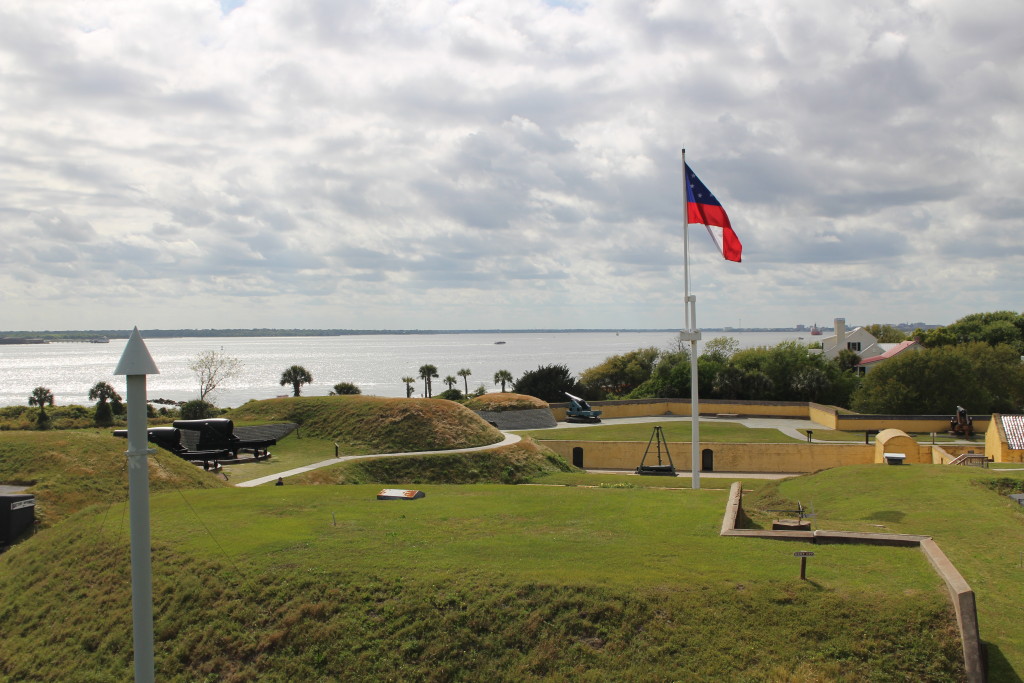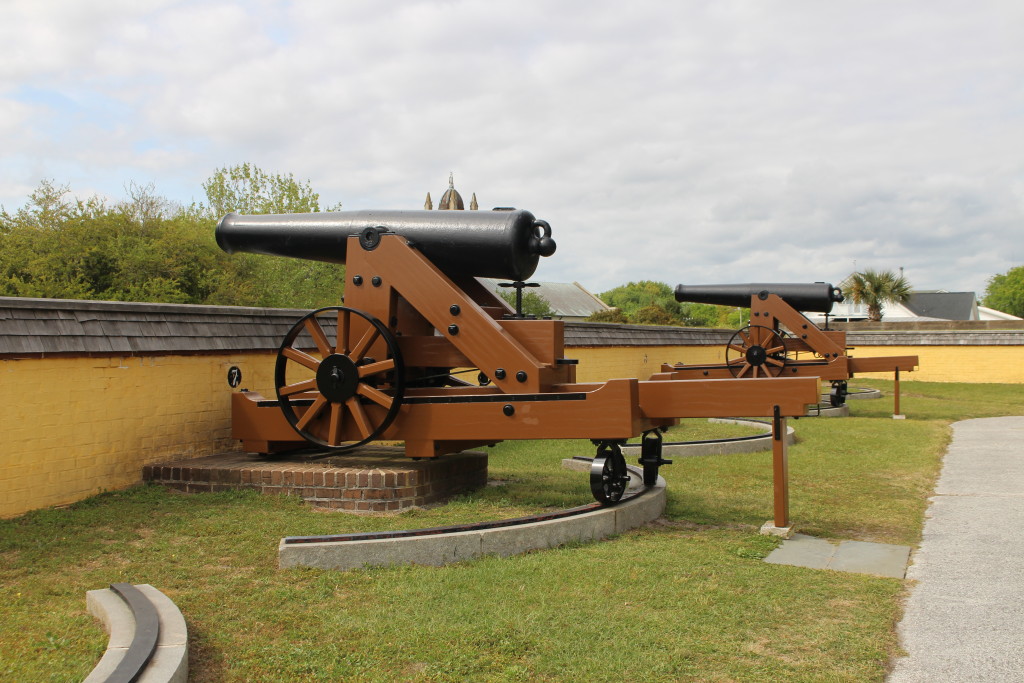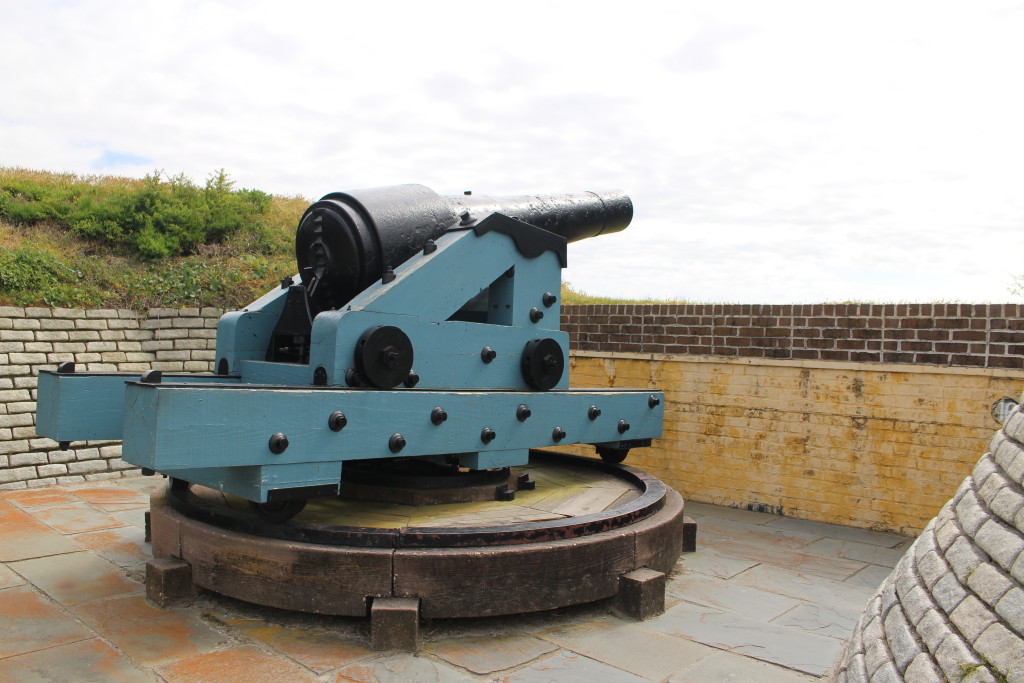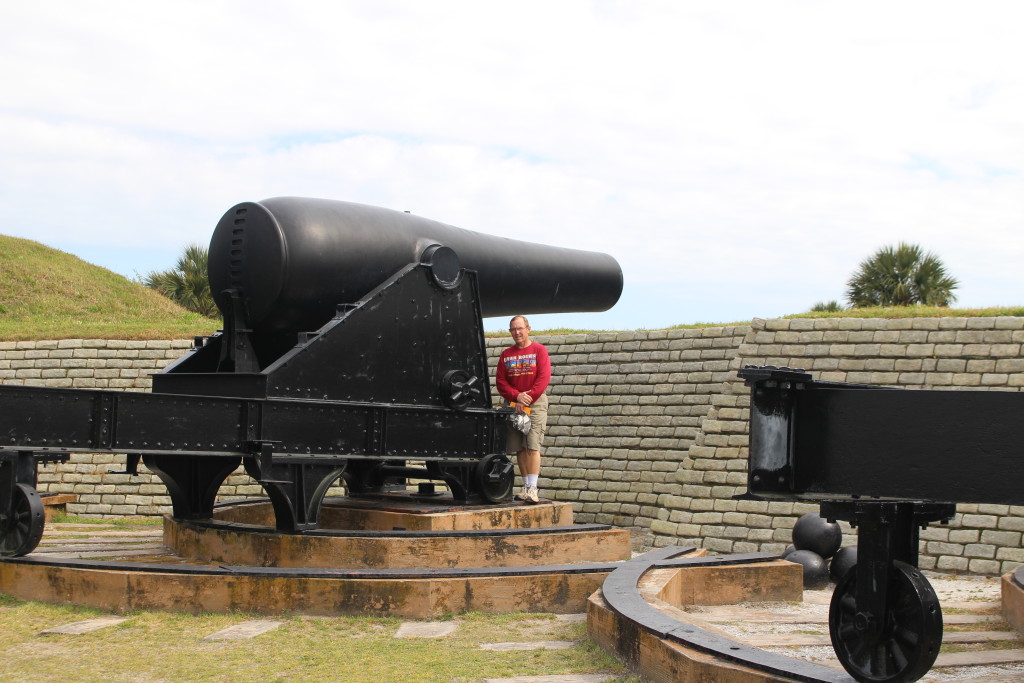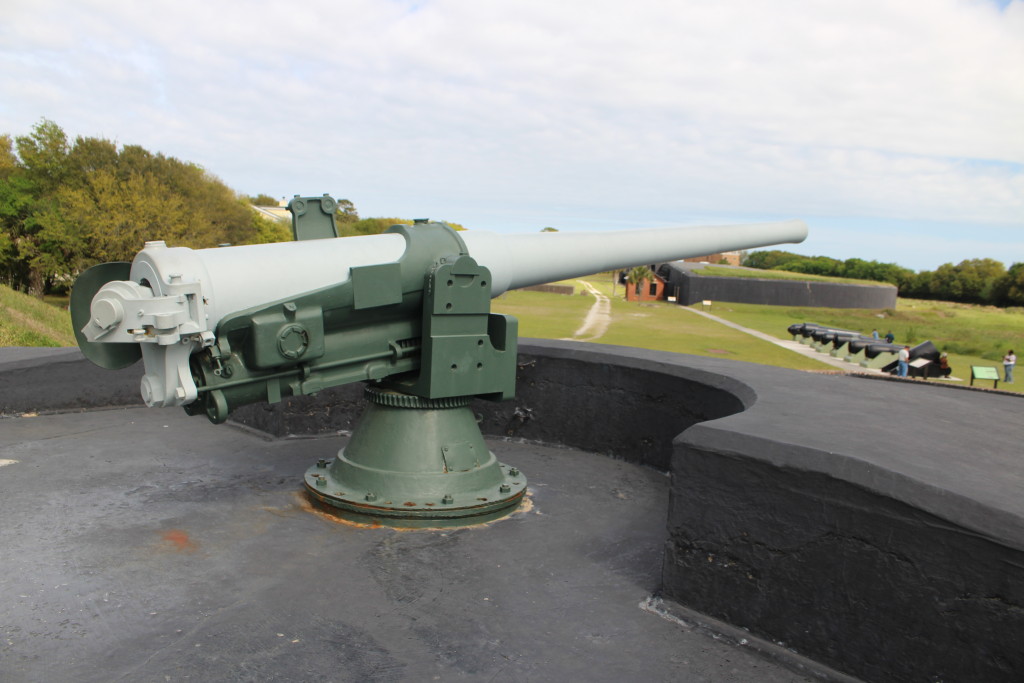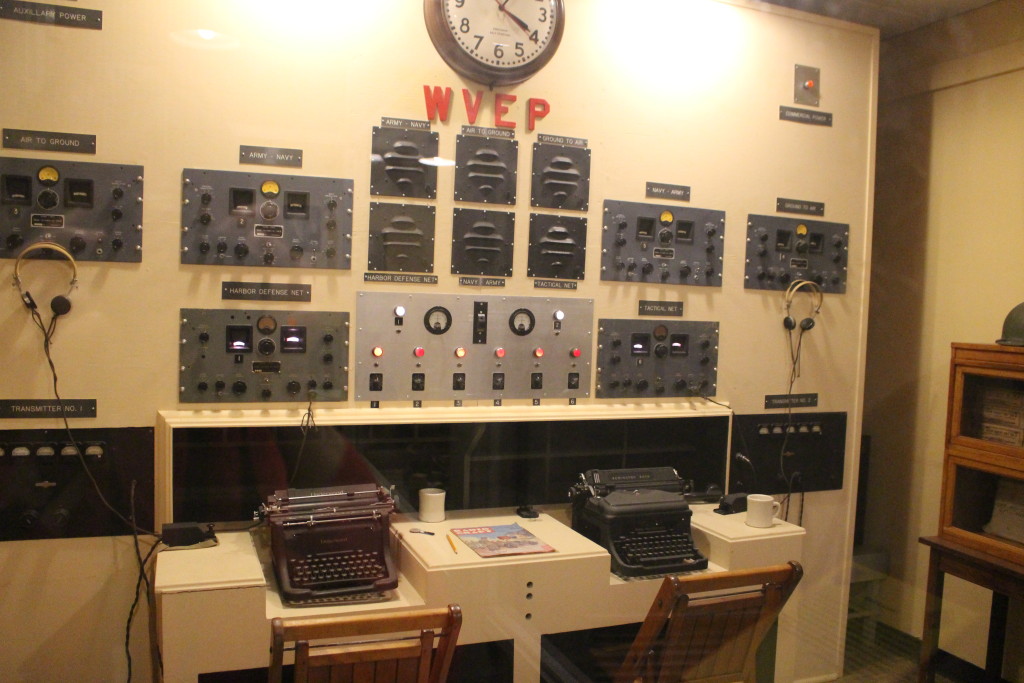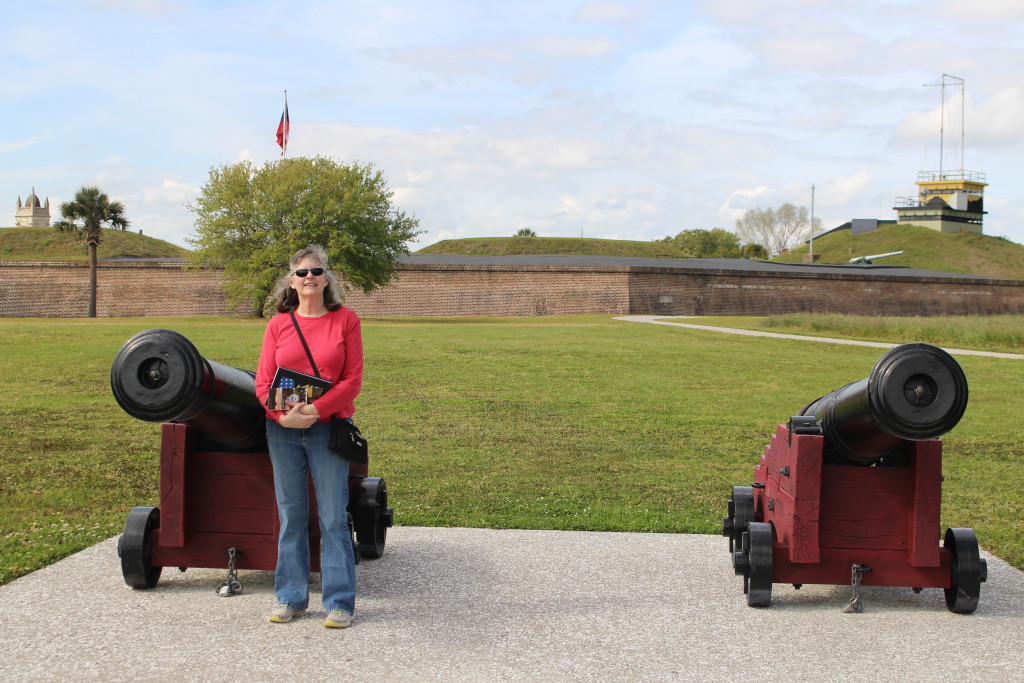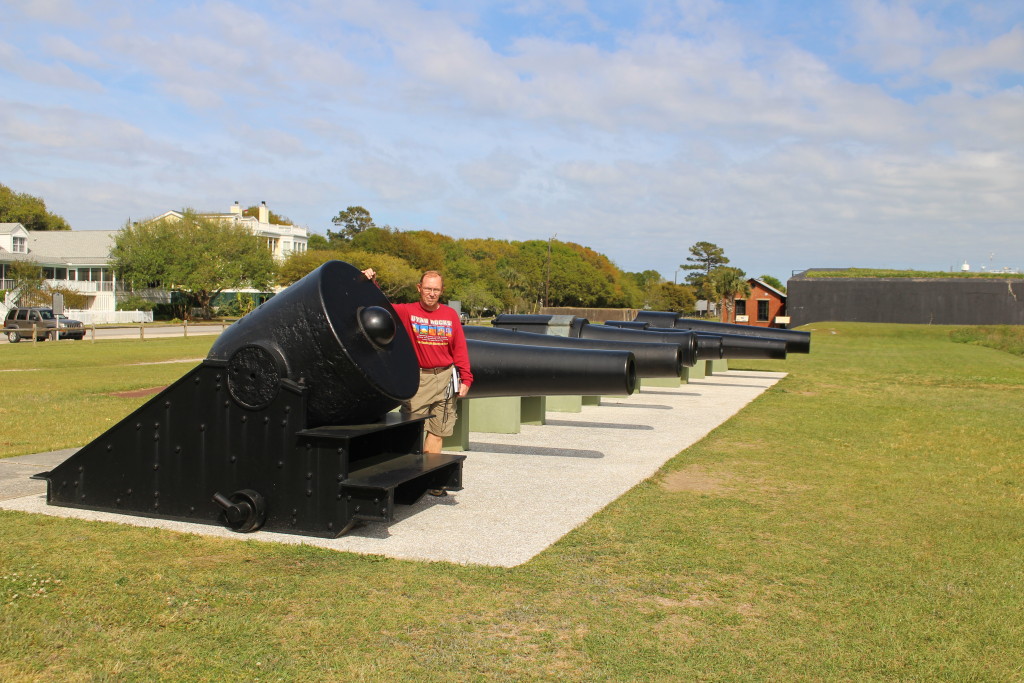When Tom and I went to Fort Sumter, we also stopped by Fort Moultrie. Actually, we went to Fort Moultrie first because we were more interested in it. But Fort Moultrie is not its own National Park: it is a division of the Fort Sumter National Monument. So a lot of people have never heard of Fort Moultrie and certainly don’t go to visit it the way they go to Fort Sumter.
Fort Moultrie was originally built in 1776 at the beginning of the hostilities with Great Britain. It was built to defend Charleston Harbor. The original fort was hastily built with a double wall of Palmetto logs and a layer of dirt between the two walls. When the British fleet arrived in Charleston Harbor on June 28, 1776, thinking to easily take the “undefended” city, the Patriot soldiers at the fort used their 30 cannon to drive off the 200 guns of the British fleet. The British cannonballs bounced harmlessly off the spongy Palmetto walls of the fort. This is why there is a Palmetto tree on the South Carolina state flag! When the British attacked Charleston again in 1779, they wisely bypassed Fort Moultrie and beseiged the city from the land around it.
The original palmetto fort was mostly gone by the time the United States government decided it needed a series of forts along the Atlantic coastline. A second Fort Moultrie was completed in 1798, but it was destroyed by a hurricane in 1804. In 1809 a new, sturdier, brick fort was built in its place which served during the War of 1812. A series of forts was built around Charleston Harbor, meant to complement each other and prevent ships from reaching the city: Fort Moultrie, Fort Sumter, Fort Johnson, and Castle Pinckney.
The greatest use of all four forts was during the Civil War when the three smaller forts combined to attack Fort Sumter in the opening shots of the Civil War. The rebel soldiers drove off the federal forces and Charleston would remain in southern hands through the war. By the end of the Civil War, however, all the forts had been blasted into oblivion by Union cannon.
Fort Moultrie was modernized in the 1870’s with huge new cannon. Magazines and bombproofs were built of thick concrete and buried under tons of earth. As war technology changed, harbor defense became more complicated. During World War I and II, Fort Moultrie was used largely as an observation post watching for submarines and equipped with anti-aircraft guns.
Today a tour of Fort Moultrie takes you through the history of coastal defense, from the original palmetto fort through the observation station of World War II. You can see how the technology of defense changed over time and see a hint of each of the fort’s manifestations in the waysides. They also explain why the fort was abandoned when we entered the age of nuclear technology.
Tom and I enjoyed our visit to Fort Moultrie very much. We thought it was much more interesting than Fort Sumter and hope that people will make a point of visiting, even if it is “just a division” of Fort Sumter.


